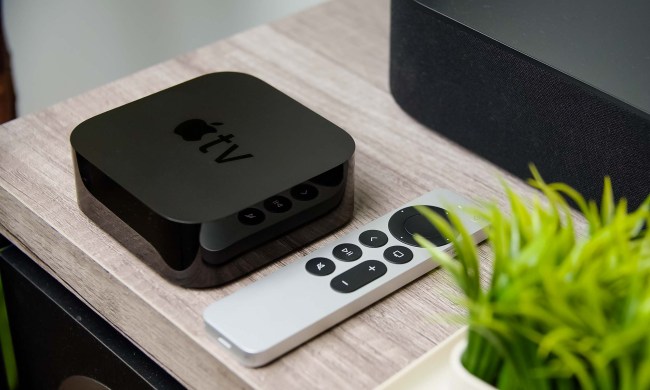“While the K-box is an interesting concept, producing great audio requires more than just innovative technology alone.”
- Small
- attractive form factor; light weight; long life from a rechargeable battery
- Grating highs and distorted lows; must be connected to a PC to recharge battery; expensive
Summary
The iPod and dozens of other digital media players make it easy to take your music anywhere. Playing this music when you arrive, on the other hand, is much more difficult—at least if you intend for more than one person to hear it. You’ll need self-amplified speakers at a minimum, and these often require more electrical power than you can squeeze out of a set of batteries. Kerchoonz, a social networking and media streaming service based in Scotland, has come up with a device that promises to solve this problem by effectively transforming any flat surface into a loundspeaker. The end result of our tests? It both does and doesn’t, as you’ll quickly be chagrined to discover.
Features and Design
We think the audio quality sucks, but we’ll explain how the device works because the concept is extremely interesting. Plug the K-box into your digital media player or laptop PC, and it effectively turns whatever surface it’s resting on into a giant loudspeaker. The trick is made possible by a new type of audio transducer technology, called Gel Audio, developed by another company in the U.K., SFX Technologies.

The K-box, which is roughly the same size as an iPhone (it measures 4.5 inches wide, 2.2-inches high, and 0.8 inches thick), is outfitted with a 1/8-inch audio input and mini USB port for recharging its internal battery. (The company claims a fully charged battery will deliver 20 hours of use.) A conventional speaker produces mid-range and high frequencies, which emerge through a grill on its top surface. SFX’s Gel Audio transducer produces bass frequencies, and the full spectrum of sound is propagated across a thick gel pad (think Dr. Scholl’s insoles) on the back of the K-box. Sound is then transferred to whatever surface the K-box is resting on. Put your ear to the surface and you’ll ear music emanating from it just as if it were a conventional loudspeaker.
Performance
Kerchoonz claims that the thicker the surface, the more bass response the K-box will produce; but that wasn’t our experience. We achieved the best performance from wooden surfaces, such as the tops of desks and dressers. The K-box delivered very little bass response when placed on granite countertops, porcelain floor tiles laid over a concrete subfloor, and a pool table with a three-quarter-inch slate top. We suspect the density of these surfaces impeded the sound waves’ travel.

The gel surface on the back of the speaker is just sticky enough to pick up dust, fibers, cat hair, and other particles from the surfaces it’s placed on. This accumulation of detritus didn’t seem to have much of an impact on the K-box’s audio performance, but it eventually became revolting to look at. Fortunately, it cleans up easily with a wet cloth (don’t make the mistaking of using tissue).
We’ve already tipped our hand as to what we think of the K-box’s audio quality—it reminded us of the cheap, ball-shaped transistor radios that Radio Shack used to sell—but let us explain how we reached that conclusion: Listening to Paul Thorn’s “Sister Ruby’s House of Prayer,” which we ripped from his Mission Temple Fireworks Stand CD and encoded to Apple Lossless, was about as enjoyable as having a plumber’s snake ream out our ears. We love the crazy sitar work on this song, but the K-box reduced it to dissonant, mangled chaos.

Hearing the swirling percussion move from left to right and back again on Lenny Kravitz’s Black Velveteen (from his 5 release) on a conventional 2.1-channel desktop speaker system also reminded us how important a true stereo sound field can be. The K-box delivers a surprisingly wide sound stage considering its size, but it doesn’t present a distinct left and right.
Conclusion
The bottom line in a nutshell? The K-box makes an interesting conversation piece. However, you won’t want to spend a lot of time actually listening to the device once you’ve explained to curious onlookers how it operates. In other words, take a pass.
Pros:
- Small
- Light
- Attractive
- Long battery life
Cons:
- Poor audio fidelity
- Relies on a PC to recharge battery
- Lousy price/performance ratio compared to more conventional speakers


